I have a data frame with two columns. The first is a numerical value, the other is a string describing a time. The time format looks like yyyy-mm-dd--hh-mm-ss-?????? (e.g. 2015-03-04--12-11-35-669696), I don't know what the last 6 digits mean. E.g.
y time
1 4.548 2014-08-11--09-07-44-202586
2 4.548 2014-08-11--09-07-54-442586
3 4.548 2014-08-11--09-08-04-522586
4 4.478 2014-08-11--09-08-14-762586
5 4.431 2014-08-11--09-08-24-522586
6 4.446 2014-08-11--09-08-34-922586
7 4.492 2014-08-11--09-08-44-522586
8 4.508 2014-08-11--09-08-54-442586
9 4.486 2014-08-11--09-09-04-202586
10 4.497 2014-08-11--09-09-14-442586
11 4.461 2014-08-11--09-09-24-202586
I want to plot them with
ggplot(df, aes(x=time, y=y)) + geom_line()
But I have the problem, that ggplot doesn't know how to deal with data of class character and in particular with my given time format. I tried to use AsciiToInt from the pakage {sfsmisc} to convert the strings to numerical values, but it repeats a list of integers for each string (one number for each character, of course). I can also sort my time strings with mixedsort from the pakage {gtools}, but I don't how to apply it for the plot (also keeping in mind the distance).
Another problem is that I don't want every time string appear as tick at the x-axis, due to I have around 20k rows. Maybe I can solve that problem like in this question, but I cannot check that as long as the first problem occurs.
Can you help me, ploting such data with the time as a numeric-like value on the x-axis?
